Reptiles of the World
Photo Workshop
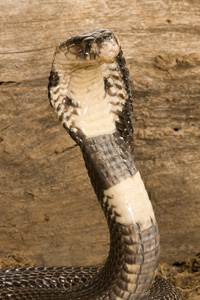
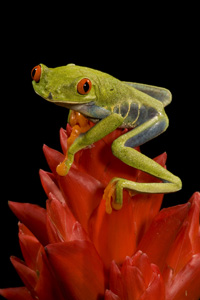
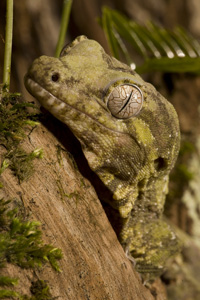
Truly one of the most unique photographic opportunities available anywhere...
Read our Trip Report for 2014
Nearly 100 different subjects, including
venomous snakes and a variety of nonvenomous reptiles and amphibians from around the world, photographed in authentic,
natural-looking set-ups with our studio electronic flashes for attractive, artistic lighting.
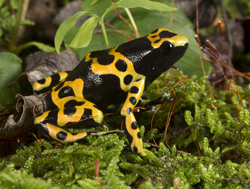
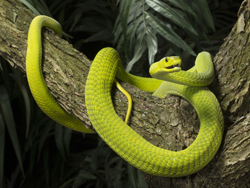
Contact our office if intersted in this shoot.
There are no future Reptile Shoots planned at this time.
Limited to Six Photographers
Price: TBA
includes all meals, lodging (double occupancy), studio
flash equipment, and subjects.
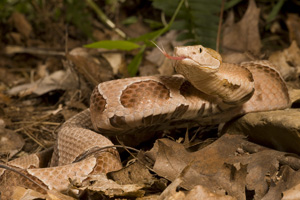

Contact our office to sign up.
INCREDIBLE NEW ANIMALS!
We use reptiles and amphibians from several sources. An AZA accredited zoo supplies some of the most exciting snakes, including cobras and mambas, and interesting geckos. A private collection supplies many of our rattlesnakes and copperheads, and my friend, Dave Northcott, who assists me on this shoot brings a variety of animals, including many of our regular, charismatic or famous subjects.
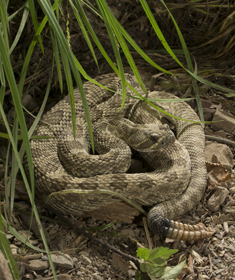
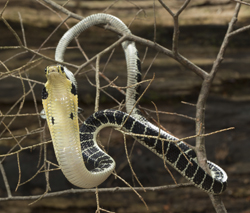
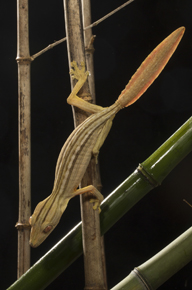
Imagine obtaining a subject-level, full-frame portrait of a tropical rhinocerous viper, one of the most deadly snakes in the world. Imagine being eye-level with a hooding Indian Cobra, reared up in a threat display just feet away from your camera.
Imagine the compositional potential of a rattlesnake's head and tail, juxtapositioned together in a natural pose that combines the essential elements of this unique group of snakes.
Imagine ... exotic lizards and chameleons, venomous and nonvenomous snakes, geckos, horned frogs, and more, filmed closeup, with great depth of field, razor sharp!
Imagine attending this very, very unique photographic opportunity, our reptile and amphibian photo shoot in studio, where you'll have a safe, and exciting, opportunity to film a variety of subjects generally unattainable to the nature and wildlife photographer.
The Following is the complete brochure. It will take a few minutes to read. If you'd like, click here to View a Reptiles of the World Portfolio, or
to return to HomePage or to photo tours general information.
View a
2014 Portfolio by Joe Messina or
2011 Portfolio of This Shoot
or
read our Reptile Shoot Reports
Here are the details:
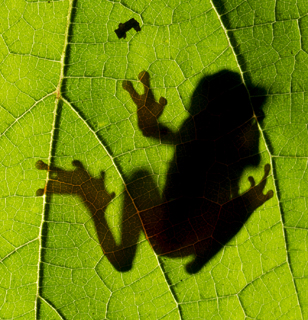
We'll be shooting in studio conditions, that is, using recreations of natural habitats and using electronic flash units for illumination. You'll be using our lighting setups, with studio lights that will enable you to enjoy great depth of field while still having a reasonably fast flash duration.
Our habitats will as closely match that of our subject's natural habitat as is possible. Since I've started doing this shoot nearly twenty years ago I've had the opportunity to visit most of the habitats where our subjects live, and had the chance to confirm what I already knew -- our sets are authentic!
Further, we make natural and exciting lighting setups, so your images won't look flat and will not look like your typical (read boring, unnatural, flat) flash photographs.

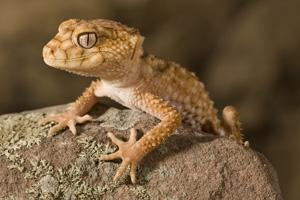
In contrast to other reptile shoots being offered, you use our flash equipment for guaranteed great lighting.You are not shooting through glass, and each subject is in its own unique setting, reflecting the habitat where that subject would be found.
And our groups are small!
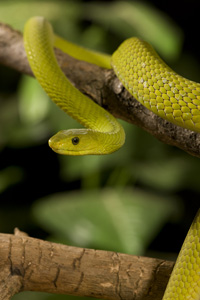 Because you'll be using our electronic flash units, you won't need to worry about lighting or about understanding flash technique. We'll set up multiple units to provide even, natural-looking lighting that will bring out the best color in our subjects, and allow you to use your fastest flash synch speed and smallest apertures for greatest depth of field. My primary flash system is a three to five flash head Einstein system with a fast enough flash duration to freeze a snake's exploring tongue.
Because you'll be using our electronic flash units, you won't need to worry about lighting or about understanding flash technique. We'll set up multiple units to provide even, natural-looking lighting that will bring out the best color in our subjects, and allow you to use your fastest flash synch speed and smallest apertures for greatest depth of field. My primary flash system is a three to five flash head Einstein system with a fast enough flash duration to freeze a snake's exploring tongue.
Additionally, you'll also be perfectly safe. Many species of venomous snake are lethargic, as if they're merely waiting for you to come in close enough to 'make their day'. We'll stay out of the danger zone for these species and all other potentially dangerous snakes.
Many people are afraid of snakes, but after this shoot almost everyone, even the most fearful, has a new appreciation for their grace and beauty, and most have lost their fear or dislike of snakes.
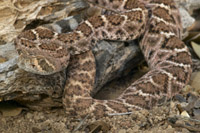
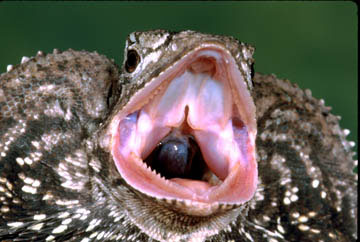

You'll also be under our complete control and command. This workshop will be limited to only six photographers who will take turns shooting the subjects we have displayed. Because these animals are potentially lethal we will demand your total and complete cooperation. There will be no horseplay or fooling around, and anyone who does not take this seriously will be immediately removed from the shoot, before a snake removes that person from this world. I'll have liability release forms, and a contract drawn which states that anyone not following our instructions and safety precautions will be excused from the shoot and will forfeit their fee in doing so. If this sounds hard-nosed, it is, but we'll be responsible for your safety and the group's, and we're taking this very seriously.
We'll have a variety of subjects on hand, actually far more than your time may allow you to shoot. The venomous subjects may include a few species of copperhead, rattlesnake, cottonmouth; Indian cobras; Gaboon vipers; rhinocerous vipers; puff adders; tree vipers; and perhaps a few extras. The nonvenomous subjects may include rat snakes, tricolored king snakes (the coral snake-like mimics), terrestrial and arboreal boas, and small pythons. We may also have a few species of amphibian, including Argentine horned frogs (extremely colorful), and treefrogs. We may have a tank or pond setup for water-level shots of alligator, caimen, or aquatic turtles.
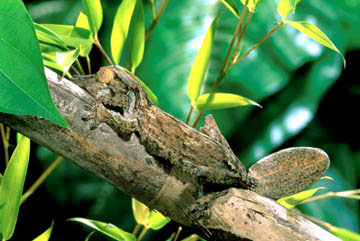 The Subjects: I don't own the animals we'll be shooting. We will be shooting subjects from three sources, Reptiland, an AZA accredited zoo specializing in reptiles; a private collection of venomous snakes; and my friend, Dave Northcott's, supply from California. Exactly what we'll film depends upon the feeding or shedding schedule of a specimen, or upon its general health or temperment. This guarantees that your time will be well spent in filming, even if you're a bit frustrated if we do run out of time before you run out of subjects. Typically, these shoots consist of a few species of rattlesnakes (2003's shoot had 22 species or subspecies of rattlesnake available), copperheads, tropical Old World Vipers, New World vipers, and a few nonvenomous snakes, lizards, and amphibians. The latter might include boas or pythons, iguanas or geckos, treefrogs or venomous toads, or more.
The Subjects: I don't own the animals we'll be shooting. We will be shooting subjects from three sources, Reptiland, an AZA accredited zoo specializing in reptiles; a private collection of venomous snakes; and my friend, Dave Northcott's, supply from California. Exactly what we'll film depends upon the feeding or shedding schedule of a specimen, or upon its general health or temperment. This guarantees that your time will be well spent in filming, even if you're a bit frustrated if we do run out of time before you run out of subjects. Typically, these shoots consist of a few species of rattlesnakes (2003's shoot had 22 species or subspecies of rattlesnake available), copperheads, tropical Old World Vipers, New World vipers, and a few nonvenomous snakes, lizards, and amphibians. The latter might include boas or pythons, iguanas or geckos, treefrogs or venomous toads, or more.
You will receive a complete list of the subjects we photograph, in the order filmed, so you won't need to take tedious notes. Additionally, the list will include the scientific name of each species and its geographic location, so critical metadata or key wording will be addressed.
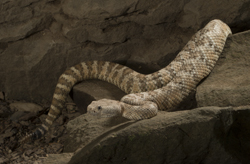 You'll note that in this brochure's introductory paragraphs I mentioned 'hooding cobras, caimans, alligators, and other species.' We have filmed all of these animals in the past, but on your particular shoot please be aware the caimans or some other species may not be available, for the reasons noted above. This shouldn't adversely affect your shoot, as there will be plenty of subjects available and you'll have more than enough species to shoot. We just don't want anyone to be disappointed because they read that we shot a species, like cobras, but on this shoot we will not be. To give you an idea of what is filmed on a typical shoot, please look at our trip report for our 2013 shoot.
You'll note that in this brochure's introductory paragraphs I mentioned 'hooding cobras, caimans, alligators, and other species.' We have filmed all of these animals in the past, but on your particular shoot please be aware the caimans or some other species may not be available, for the reasons noted above. This shouldn't adversely affect your shoot, as there will be plenty of subjects available and you'll have more than enough species to shoot. We just don't want anyone to be disappointed because they read that we shot a species, like cobras, but on this shoot we will not be. To give you an idea of what is filmed on a typical shoot, please look at our trip report for our 2013 shoot.
No matter what, we always have more subjects than you have time to shoot. We do this for several reasons. One, we do not know how quickly some groups will work, and how many subjects they may potentially shoot. We have averages, but we always want to be prepared for any eventuality. Two, some subjects may not cooperate. For example, we may have three or four cobras on hand, but only one may decide to cooperate and to stand up and hood. The others, try as we might, just try to crawl away. By having several specimens available, we maximize our chances of success and you won't be frustrated or disappointed by not being able to shoot a subject.
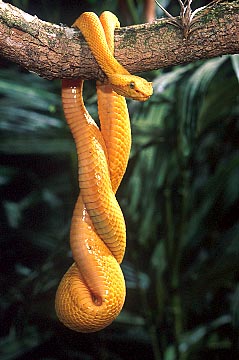 The Opportunity: The opportunity is truly unique. Personally, I've never bothered to film reptiles or amphibians in a public zoo because poses, lighting, glass clarity, or just the crowds have prevented me from really shooting the way I'd like to. Accordingly, up until the time I began doing these snake shoots, my file of exotic reptiles was very limited. It is no longer. In our reptile shoots we've filmed arboreal emerald tree boas, colorful and dramatic arboreal Wagler's tree vipers, rainbow-hued rhinocerous vipers, hooding albino Indian cobras, cute-eyed treefrogs and lizards, and much more - all under the very best of conditions, with flashes that creat exactly the type of lighting that was required, in poses that are visually interesting and dynamic. You simply cannot photograph these animals in a zoo in this way, and after this shoot you won't even wish to try!
The Opportunity: The opportunity is truly unique. Personally, I've never bothered to film reptiles or amphibians in a public zoo because poses, lighting, glass clarity, or just the crowds have prevented me from really shooting the way I'd like to. Accordingly, up until the time I began doing these snake shoots, my file of exotic reptiles was very limited. It is no longer. In our reptile shoots we've filmed arboreal emerald tree boas, colorful and dramatic arboreal Wagler's tree vipers, rainbow-hued rhinocerous vipers, hooding albino Indian cobras, cute-eyed treefrogs and lizards, and much more - all under the very best of conditions, with flashes that creat exactly the type of lighting that was required, in poses that are visually interesting and dynamic. You simply cannot photograph these animals in a zoo in this way, and after this shoot you won't even wish to try!
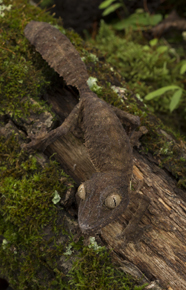
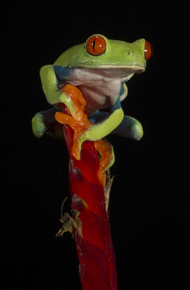

The price includes great food and lodging for the 5 day shoot. The workshop will begin at 5:30PM, on the first day of the shoot, where I'll cover the basics of shooting our subjects by reviewing the studio shoot and an orientation program that illustrates animals and techniques we've used on our previous reptile photo shoots. On subsequent days, we'll shoot from 9AM until 5:30PM, with a break for lunch (served at our home here at Hoot Hollow). One evening we'll have a get-together where you're invited to bring along 50 images for group projection. This is a welcome, relaxing break where new ideas are shared after an exhausting day shooting. On your last day we'll shoot from 9AM possibly until 3:30PM (lunch break only).
A complete list of suggested equipment, directions, room reservation forms, liability release forms and the 'contract' will be forwarded to participants. Participants are limited to six.
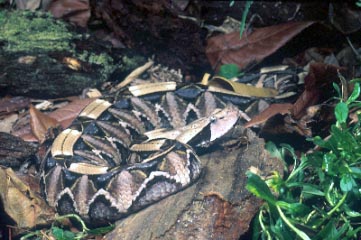
The Location: McClure, PA at our shooting studio at Hoot Hollow. Directions will be supplied to registered participants. McClure is located in central Pennsylvania about 45 miles southeast of State College (home of Penn State University), in the center of the state, between Lewistown and Selinsgrove on US route 522.
For those flying in, Harrisburg is the nearest large airport served by United, Delta, and Northwest Airlines among others. State College is the nearest airport, with limited service. Car rentals are available at both locations. Both bus and train service are available to Lewistown and arrangements can be made for your pick-up there.
Participants will be staying at a nearby Farm Vacation home, where you'll have the choice of either a private cabin (single supplement charge may apply) or a bed and breakfast style room in the main farm house. Breakfasts and dinners will be served at Mountain Dale Farm, and lunches here at our home.
Finally, this is an exclusive photo shoot limited to only six photographers. This shoot is very popular, so if you're interested, please place your deposit as soon as possible. Thanks!
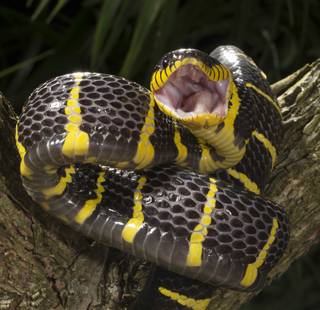
Contact our Office to REGISTER for this Photo Shoot
View a Reptiles of the World Portfolio
Return to HomePage or to photo tours general information.
Contact us by e-mail: info@hoothollow.com
Phone: (717) 543-6423 or Fax: (717) 543-5342
Return to HomePage
Reptiles of the World
Photo Workshop



Truly one of the most unique photographic opportunities available anywhere...
Read our Trip Report for 2014
Nearly 100 different subjects, including
venomous snakes and a variety of nonvenomous reptiles and amphibians from around the world, photographed in authentic,
natural-looking set-ups with our studio electronic flashes for attractive, artistic lighting.


Contact our office if intersted in this shoot.
There are no future Reptile Shoots planned at this time.
Limited to Six Photographers
Price: TBA
includes all meals, lodging (double occupancy), studio
flash equipment, and subjects.


Contact our office to sign up.
INCREDIBLE NEW ANIMALS!
We use reptiles and amphibians from several sources. An AZA accredited zoo supplies some of the most exciting snakes, including cobras and mambas, and interesting geckos. A private collection supplies many of our rattlesnakes and copperheads, and my friend, Dave Northcott, who assists me on this shoot brings a variety of animals, including many of our regular, charismatic or famous subjects.



Imagine obtaining a subject-level, full-frame portrait of a tropical rhinocerous viper, one of the most deadly snakes in the world. Imagine being eye-level with a hooding Indian Cobra, reared up in a threat display just feet away from your camera.
Imagine the compositional potential of a rattlesnake's head and tail, juxtapositioned together in a natural pose that combines the essential elements of this unique group of snakes.
Imagine ... exotic lizards and chameleons, venomous and nonvenomous snakes, geckos, horned frogs, and more, filmed closeup, with great depth of field, razor sharp!
Imagine attending this very, very unique photographic opportunity, our reptile and amphibian photo shoot in studio, where you'll have a safe, and exciting, opportunity to film a variety of subjects generally unattainable to the nature and wildlife photographer.
The Following is the complete brochure. It will take a few minutes to read. If you'd like, click here to View a Reptiles of the World Portfolio, or
to return to HomePage or to photo tours general information.
View a
2014 Portfolio by Joe Messina or
2011 Portfolio of This Shoot
or
read our Reptile Shoot Reports
Here are the details:

We'll be shooting in studio conditions, that is, using recreations of natural habitats and using electronic flash units for illumination. You'll be using our lighting setups, with studio lights that will enable you to enjoy great depth of field while still having a reasonably fast flash duration.
Our habitats will as closely match that of our subject's natural habitat as is possible. Since I've started doing this shoot nearly twenty years ago I've had the opportunity to visit most of the habitats where our subjects live, and had the chance to confirm what I already knew -- our sets are authentic!
Further, we make natural and exciting lighting setups, so your images won't look flat and will not look like your typical (read boring, unnatural, flat) flash photographs.


In contrast to other reptile shoots being offered, you use our flash equipment for guaranteed great lighting.You are not shooting through glass, and each subject is in its own unique setting, reflecting the habitat where that subject would be found.
And our groups are small!
 Because you'll be using our electronic flash units, you won't need to worry about lighting or about understanding flash technique. We'll set up multiple units to provide even, natural-looking lighting that will bring out the best color in our subjects, and allow you to use your fastest flash synch speed and smallest apertures for greatest depth of field. My primary flash system is a three to five flash head Einstein system with a fast enough flash duration to freeze a snake's exploring tongue.
Because you'll be using our electronic flash units, you won't need to worry about lighting or about understanding flash technique. We'll set up multiple units to provide even, natural-looking lighting that will bring out the best color in our subjects, and allow you to use your fastest flash synch speed and smallest apertures for greatest depth of field. My primary flash system is a three to five flash head Einstein system with a fast enough flash duration to freeze a snake's exploring tongue.
Additionally, you'll also be perfectly safe. Many species of venomous snake are lethargic, as if they're merely waiting for you to come in close enough to 'make their day'. We'll stay out of the danger zone for these species and all other potentially dangerous snakes.
Many people are afraid of snakes, but after this shoot almost everyone, even the most fearful, has a new appreciation for their grace and beauty, and most have lost their fear or dislike of snakes.



You'll also be under our complete control and command. This workshop will be limited to only six photographers who will take turns shooting the subjects we have displayed. Because these animals are potentially lethal we will demand your total and complete cooperation. There will be no horseplay or fooling around, and anyone who does not take this seriously will be immediately removed from the shoot, before a snake removes that person from this world. I'll have liability release forms, and a contract drawn which states that anyone not following our instructions and safety precautions will be excused from the shoot and will forfeit their fee in doing so. If this sounds hard-nosed, it is, but we'll be responsible for your safety and the group's, and we're taking this very seriously.
We'll have a variety of subjects on hand, actually far more than your time may allow you to shoot. The venomous subjects may include a few species of copperhead, rattlesnake, cottonmouth; Indian cobras; Gaboon vipers; rhinocerous vipers; puff adders; tree vipers; and perhaps a few extras. The nonvenomous subjects may include rat snakes, tricolored king snakes (the coral snake-like mimics), terrestrial and arboreal boas, and small pythons. We may also have a few species of amphibian, including Argentine horned frogs (extremely colorful), and treefrogs. We may have a tank or pond setup for water-level shots of alligator, caimen, or aquatic turtles.
 The Subjects: I don't own the animals we'll be shooting. We will be shooting subjects from three sources, Reptiland, an AZA accredited zoo specializing in reptiles; a private collection of venomous snakes; and my friend, Dave Northcott's, supply from California. Exactly what we'll film depends upon the feeding or shedding schedule of a specimen, or upon its general health or temperment. This guarantees that your time will be well spent in filming, even if you're a bit frustrated if we do run out of time before you run out of subjects. Typically, these shoots consist of a few species of rattlesnakes (2003's shoot had 22 species or subspecies of rattlesnake available), copperheads, tropical Old World Vipers, New World vipers, and a few nonvenomous snakes, lizards, and amphibians. The latter might include boas or pythons, iguanas or geckos, treefrogs or venomous toads, or more.
The Subjects: I don't own the animals we'll be shooting. We will be shooting subjects from three sources, Reptiland, an AZA accredited zoo specializing in reptiles; a private collection of venomous snakes; and my friend, Dave Northcott's, supply from California. Exactly what we'll film depends upon the feeding or shedding schedule of a specimen, or upon its general health or temperment. This guarantees that your time will be well spent in filming, even if you're a bit frustrated if we do run out of time before you run out of subjects. Typically, these shoots consist of a few species of rattlesnakes (2003's shoot had 22 species or subspecies of rattlesnake available), copperheads, tropical Old World Vipers, New World vipers, and a few nonvenomous snakes, lizards, and amphibians. The latter might include boas or pythons, iguanas or geckos, treefrogs or venomous toads, or more.
You will receive a complete list of the subjects we photograph, in the order filmed, so you won't need to take tedious notes. Additionally, the list will include the scientific name of each species and its geographic location, so critical metadata or key wording will be addressed.
 You'll note that in this brochure's introductory paragraphs I mentioned 'hooding cobras, caimans, alligators, and other species.' We have filmed all of these animals in the past, but on your particular shoot please be aware the caimans or some other species may not be available, for the reasons noted above. This shouldn't adversely affect your shoot, as there will be plenty of subjects available and you'll have more than enough species to shoot. We just don't want anyone to be disappointed because they read that we shot a species, like cobras, but on this shoot we will not be. To give you an idea of what is filmed on a typical shoot, please look at our trip report for our 2013 shoot.
You'll note that in this brochure's introductory paragraphs I mentioned 'hooding cobras, caimans, alligators, and other species.' We have filmed all of these animals in the past, but on your particular shoot please be aware the caimans or some other species may not be available, for the reasons noted above. This shouldn't adversely affect your shoot, as there will be plenty of subjects available and you'll have more than enough species to shoot. We just don't want anyone to be disappointed because they read that we shot a species, like cobras, but on this shoot we will not be. To give you an idea of what is filmed on a typical shoot, please look at our trip report for our 2013 shoot.
No matter what, we always have more subjects than you have time to shoot. We do this for several reasons. One, we do not know how quickly some groups will work, and how many subjects they may potentially shoot. We have averages, but we always want to be prepared for any eventuality. Two, some subjects may not cooperate. For example, we may have three or four cobras on hand, but only one may decide to cooperate and to stand up and hood. The others, try as we might, just try to crawl away. By having several specimens available, we maximize our chances of success and you won't be frustrated or disappointed by not being able to shoot a subject.
 The Opportunity: The opportunity is truly unique. Personally, I've never bothered to film reptiles or amphibians in a public zoo because poses, lighting, glass clarity, or just the crowds have prevented me from really shooting the way I'd like to. Accordingly, up until the time I began doing these snake shoots, my file of exotic reptiles was very limited. It is no longer. In our reptile shoots we've filmed arboreal emerald tree boas, colorful and dramatic arboreal Wagler's tree vipers, rainbow-hued rhinocerous vipers, hooding albino Indian cobras, cute-eyed treefrogs and lizards, and much more - all under the very best of conditions, with flashes that creat exactly the type of lighting that was required, in poses that are visually interesting and dynamic. You simply cannot photograph these animals in a zoo in this way, and after this shoot you won't even wish to try!
The Opportunity: The opportunity is truly unique. Personally, I've never bothered to film reptiles or amphibians in a public zoo because poses, lighting, glass clarity, or just the crowds have prevented me from really shooting the way I'd like to. Accordingly, up until the time I began doing these snake shoots, my file of exotic reptiles was very limited. It is no longer. In our reptile shoots we've filmed arboreal emerald tree boas, colorful and dramatic arboreal Wagler's tree vipers, rainbow-hued rhinocerous vipers, hooding albino Indian cobras, cute-eyed treefrogs and lizards, and much more - all under the very best of conditions, with flashes that creat exactly the type of lighting that was required, in poses that are visually interesting and dynamic. You simply cannot photograph these animals in a zoo in this way, and after this shoot you won't even wish to try!



The price includes great food and lodging for the 5 day shoot. The workshop will begin at 5:30PM, on the first day of the shoot, where I'll cover the basics of shooting our subjects by reviewing the studio shoot and an orientation program that illustrates animals and techniques we've used on our previous reptile photo shoots. On subsequent days, we'll shoot from 9AM until 5:30PM, with a break for lunch (served at our home here at Hoot Hollow). One evening we'll have a get-together where you're invited to bring along 50 images for group projection. This is a welcome, relaxing break where new ideas are shared after an exhausting day shooting. On your last day we'll shoot from 9AM possibly until 3:30PM (lunch break only).
A complete list of suggested equipment, directions, room reservation forms, liability release forms and the 'contract' will be forwarded to participants. Participants are limited to six.

The Location: McClure, PA at our shooting studio at Hoot Hollow. Directions will be supplied to registered participants. McClure is located in central Pennsylvania about 45 miles southeast of State College (home of Penn State University), in the center of the state, between Lewistown and Selinsgrove on US route 522.
For those flying in, Harrisburg is the nearest large airport served by United, Delta, and Northwest Airlines among others. State College is the nearest airport, with limited service. Car rentals are available at both locations. Both bus and train service are available to Lewistown and arrangements can be made for your pick-up there.
Participants will be staying at a nearby Farm Vacation home, where you'll have the choice of either a private cabin (single supplement charge may apply) or a bed and breakfast style room in the main farm house. Breakfasts and dinners will be served at Mountain Dale Farm, and lunches here at our home.
Finally, this is an exclusive photo shoot limited to only six photographers. This shoot is very popular, so if you're interested, please place your deposit as soon as possible. Thanks!

Contact our Office to REGISTER for this Photo Shoot
View a Reptiles of the World Portfolio
Return to HomePage or to photo tours general information.
Contact us by e-mail: info@hoothollow.com
Phone: (717) 543-6423 or Fax: (717) 543-5342
Return to HomePage
Reptiles of the World
Photo Workshop



Truly one of the most unique photographic opportunities available anywhere...
Read our Trip Report for 2014
Nearly 100 different subjects, including
venomous snakes and a variety of nonvenomous reptiles and amphibians from around the world, photographed in authentic,
natural-looking set-ups with our studio electronic flashes for attractive, artistic lighting.


Contact our office if intersted in this shoot.
There are no future Reptile Shoots planned at this time.
Limited to Six Photographers
Price: TBA
includes all meals, lodging (double occupancy), studio
flash equipment, and subjects.


Contact our office to sign up.
INCREDIBLE NEW ANIMALS!
We use reptiles and amphibians from several sources. An AZA accredited zoo supplies some of the most exciting snakes, including cobras and mambas, and interesting geckos. A private collection supplies many of our rattlesnakes and copperheads, and my friend, Dave Northcott, who assists me on this shoot brings a variety of animals, including many of our regular, charismatic or famous subjects.



Imagine obtaining a subject-level, full-frame portrait of a tropical rhinocerous viper, one of the most deadly snakes in the world. Imagine being eye-level with a hooding Indian Cobra, reared up in a threat display just feet away from your camera.
Imagine the compositional potential of a rattlesnake's head and tail, juxtapositioned together in a natural pose that combines the essential elements of this unique group of snakes.
Imagine ... exotic lizards and chameleons, venomous and nonvenomous snakes, geckos, horned frogs, and more, filmed closeup, with great depth of field, razor sharp!
Imagine attending this very, very unique photographic opportunity, our reptile and amphibian photo shoot in studio, where you'll have a safe, and exciting, opportunity to film a variety of subjects generally unattainable to the nature and wildlife photographer.
The Following is the complete brochure. It will take a few minutes to read. If you'd like, click here to View a Reptiles of the World Portfolio, or
to return to HomePage or to photo tours general information.
View a
2014 Portfolio by Joe Messina or
2011 Portfolio of This Shoot
or
read our Reptile Shoot Reports
Here are the details:

We'll be shooting in studio conditions, that is, using recreations of natural habitats and using electronic flash units for illumination. You'll be using our lighting setups, with studio lights that will enable you to enjoy great depth of field while still having a reasonably fast flash duration.
Our habitats will as closely match that of our subject's natural habitat as is possible. Since I've started doing this shoot nearly twenty years ago I've had the opportunity to visit most of the habitats where our subjects live, and had the chance to confirm what I already knew -- our sets are authentic!
Further, we make natural and exciting lighting setups, so your images won't look flat and will not look like your typical (read boring, unnatural, flat) flash photographs.


In contrast to other reptile shoots being offered, you use our flash equipment for guaranteed great lighting.You are not shooting through glass, and each subject is in its own unique setting, reflecting the habitat where that subject would be found.
And our groups are small!
 Because you'll be using our electronic flash units, you won't need to worry about lighting or about understanding flash technique. We'll set up multiple units to provide even, natural-looking lighting that will bring out the best color in our subjects, and allow you to use your fastest flash synch speed and smallest apertures for greatest depth of field. My primary flash system is a three to five flash head Einstein system with a fast enough flash duration to freeze a snake's exploring tongue.
Because you'll be using our electronic flash units, you won't need to worry about lighting or about understanding flash technique. We'll set up multiple units to provide even, natural-looking lighting that will bring out the best color in our subjects, and allow you to use your fastest flash synch speed and smallest apertures for greatest depth of field. My primary flash system is a three to five flash head Einstein system with a fast enough flash duration to freeze a snake's exploring tongue.
Additionally, you'll also be perfectly safe. Many species of venomous snake are lethargic, as if they're merely waiting for you to come in close enough to 'make their day'. We'll stay out of the danger zone for these species and all other potentially dangerous snakes.
Many people are afraid of snakes, but after this shoot almost everyone, even the most fearful, has a new appreciation for their grace and beauty, and most have lost their fear or dislike of snakes.



You'll also be under our complete control and command. This workshop will be limited to only six photographers who will take turns shooting the subjects we have displayed. Because these animals are potentially lethal we will demand your total and complete cooperation. There will be no horseplay or fooling around, and anyone who does not take this seriously will be immediately removed from the shoot, before a snake removes that person from this world. I'll have liability release forms, and a contract drawn which states that anyone not following our instructions and safety precautions will be excused from the shoot and will forfeit their fee in doing so. If this sounds hard-nosed, it is, but we'll be responsible for your safety and the group's, and we're taking this very seriously.
We'll have a variety of subjects on hand, actually far more than your time may allow you to shoot. The venomous subjects may include a few species of copperhead, rattlesnake, cottonmouth; Indian cobras; Gaboon vipers; rhinocerous vipers; puff adders; tree vipers; and perhaps a few extras. The nonvenomous subjects may include rat snakes, tricolored king snakes (the coral snake-like mimics), terrestrial and arboreal boas, and small pythons. We may also have a few species of amphibian, including Argentine horned frogs (extremely colorful), and treefrogs. We may have a tank or pond setup for water-level shots of alligator, caimen, or aquatic turtles.
 The Subjects: I don't own the animals we'll be shooting. We will be shooting subjects from three sources, Reptiland, an AZA accredited zoo specializing in reptiles; a private collection of venomous snakes; and my friend, Dave Northcott's, supply from California. Exactly what we'll film depends upon the feeding or shedding schedule of a specimen, or upon its general health or temperment. This guarantees that your time will be well spent in filming, even if you're a bit frustrated if we do run out of time before you run out of subjects. Typically, these shoots consist of a few species of rattlesnakes (2003's shoot had 22 species or subspecies of rattlesnake available), copperheads, tropical Old World Vipers, New World vipers, and a few nonvenomous snakes, lizards, and amphibians. The latter might include boas or pythons, iguanas or geckos, treefrogs or venomous toads, or more.
The Subjects: I don't own the animals we'll be shooting. We will be shooting subjects from three sources, Reptiland, an AZA accredited zoo specializing in reptiles; a private collection of venomous snakes; and my friend, Dave Northcott's, supply from California. Exactly what we'll film depends upon the feeding or shedding schedule of a specimen, or upon its general health or temperment. This guarantees that your time will be well spent in filming, even if you're a bit frustrated if we do run out of time before you run out of subjects. Typically, these shoots consist of a few species of rattlesnakes (2003's shoot had 22 species or subspecies of rattlesnake available), copperheads, tropical Old World Vipers, New World vipers, and a few nonvenomous snakes, lizards, and amphibians. The latter might include boas or pythons, iguanas or geckos, treefrogs or venomous toads, or more.
You will receive a complete list of the subjects we photograph, in the order filmed, so you won't need to take tedious notes. Additionally, the list will include the scientific name of each species and its geographic location, so critical metadata or key wording will be addressed.
 You'll note that in this brochure's introductory paragraphs I mentioned 'hooding cobras, caimans, alligators, and other species.' We have filmed all of these animals in the past, but on your particular shoot please be aware the caimans or some other species may not be available, for the reasons noted above. This shouldn't adversely affect your shoot, as there will be plenty of subjects available and you'll have more than enough species to shoot. We just don't want anyone to be disappointed because they read that we shot a species, like cobras, but on this shoot we will not be. To give you an idea of what is filmed on a typical shoot, please look at our trip report for our 2013 shoot.
You'll note that in this brochure's introductory paragraphs I mentioned 'hooding cobras, caimans, alligators, and other species.' We have filmed all of these animals in the past, but on your particular shoot please be aware the caimans or some other species may not be available, for the reasons noted above. This shouldn't adversely affect your shoot, as there will be plenty of subjects available and you'll have more than enough species to shoot. We just don't want anyone to be disappointed because they read that we shot a species, like cobras, but on this shoot we will not be. To give you an idea of what is filmed on a typical shoot, please look at our trip report for our 2013 shoot.
No matter what, we always have more subjects than you have time to shoot. We do this for several reasons. One, we do not know how quickly some groups will work, and how many subjects they may potentially shoot. We have averages, but we always want to be prepared for any eventuality. Two, some subjects may not cooperate. For example, we may have three or four cobras on hand, but only one may decide to cooperate and to stand up and hood. The others, try as we might, just try to crawl away. By having several specimens available, we maximize our chances of success and you won't be frustrated or disappointed by not being able to shoot a subject.
 The Opportunity: The opportunity is truly unique. Personally, I've never bothered to film reptiles or amphibians in a public zoo because poses, lighting, glass clarity, or just the crowds have prevented me from really shooting the way I'd like to. Accordingly, up until the time I began doing these snake shoots, my file of exotic reptiles was very limited. It is no longer. In our reptile shoots we've filmed arboreal emerald tree boas, colorful and dramatic arboreal Wagler's tree vipers, rainbow-hued rhinocerous vipers, hooding albino Indian cobras, cute-eyed treefrogs and lizards, and much more - all under the very best of conditions, with flashes that creat exactly the type of lighting that was required, in poses that are visually interesting and dynamic. You simply cannot photograph these animals in a zoo in this way, and after this shoot you won't even wish to try!
The Opportunity: The opportunity is truly unique. Personally, I've never bothered to film reptiles or amphibians in a public zoo because poses, lighting, glass clarity, or just the crowds have prevented me from really shooting the way I'd like to. Accordingly, up until the time I began doing these snake shoots, my file of exotic reptiles was very limited. It is no longer. In our reptile shoots we've filmed arboreal emerald tree boas, colorful and dramatic arboreal Wagler's tree vipers, rainbow-hued rhinocerous vipers, hooding albino Indian cobras, cute-eyed treefrogs and lizards, and much more - all under the very best of conditions, with flashes that creat exactly the type of lighting that was required, in poses that are visually interesting and dynamic. You simply cannot photograph these animals in a zoo in this way, and after this shoot you won't even wish to try!



The price includes great food and lodging for the 5 day shoot. The workshop will begin at 5:30PM, on the first day of the shoot, where I'll cover the basics of shooting our subjects by reviewing the studio shoot and an orientation program that illustrates animals and techniques we've used on our previous reptile photo shoots. On subsequent days, we'll shoot from 9AM until 5:30PM, with a break for lunch (served at our home here at Hoot Hollow). One evening we'll have a get-together where you're invited to bring along 50 images for group projection. This is a welcome, relaxing break where new ideas are shared after an exhausting day shooting. On your last day we'll shoot from 9AM possibly until 3:30PM (lunch break only).
A complete list of suggested equipment, directions, room reservation forms, liability release forms and the 'contract' will be forwarded to participants. Participants are limited to six.

The Location: McClure, PA at our shooting studio at Hoot Hollow. Directions will be supplied to registered participants. McClure is located in central Pennsylvania about 45 miles southeast of State College (home of Penn State University), in the center of the state, between Lewistown and Selinsgrove on US route 522.
For those flying in, Harrisburg is the nearest large airport served by United, Delta, and Northwest Airlines among others. State College is the nearest airport, with limited service. Car rentals are available at both locations. Both bus and train service are available to Lewistown and arrangements can be made for your pick-up there.
Participants will be staying at a nearby Farm Vacation home, where you'll have the choice of either a private cabin (single supplement charge may apply) or a bed and breakfast style room in the main farm house. Breakfasts and dinners will be served at Mountain Dale Farm, and lunches here at our home.
Finally, this is an exclusive photo shoot limited to only six photographers. This shoot is very popular, so if you're interested, please place your deposit as soon as possible. Thanks!

Contact our Office to REGISTER for this Photo Shoot
View a Reptiles of the World Portfolio
Return to HomePage or to photo tours general information.
Contact us by e-mail: info@hoothollow.com
Phone: (717) 543-6423 or Fax: (717) 543-5342
Return to HomePage
Reptiles of the World
Photo Workshop



Truly one of the most unique photographic opportunities available anywhere...
Read our Trip Report for 2014
Nearly 100 different subjects, including
venomous snakes and a variety of nonvenomous reptiles and amphibians from around the world, photographed in authentic,
natural-looking set-ups with our studio electronic flashes for attractive, artistic lighting.


Contact our office if intersted in this shoot.
There are no future Reptile Shoots planned at this time.
Limited to Six Photographers
Price: TBA
includes all meals, lodging (double occupancy), studio
flash equipment, and subjects.


Contact our office to sign up.
INCREDIBLE NEW ANIMALS!
We use reptiles and amphibians from several sources. An AZA accredited zoo supplies some of the most exciting snakes, including cobras and mambas, and interesting geckos. A private collection supplies many of our rattlesnakes and copperheads, and my friend, Dave Northcott, who assists me on this shoot brings a variety of animals, including many of our regular, charismatic or famous subjects.



Imagine obtaining a subject-level, full-frame portrait of a tropical rhinocerous viper, one of the most deadly snakes in the world. Imagine being eye-level with a hooding Indian Cobra, reared up in a threat display just feet away from your camera.
Imagine the compositional potential of a rattlesnake's head and tail, juxtapositioned together in a natural pose that combines the essential elements of this unique group of snakes.
Imagine ... exotic lizards and chameleons, venomous and nonvenomous snakes, geckos, horned frogs, and more, filmed closeup, with great depth of field, razor sharp!
Imagine attending this very, very unique photographic opportunity, our reptile and amphibian photo shoot in studio, where you'll have a safe, and exciting, opportunity to film a variety of subjects generally unattainable to the nature and wildlife photographer.
The Following is the complete brochure. It will take a few minutes to read. If you'd like, click here to View a Reptiles of the World Portfolio, or
to return to HomePage or to photo tours general information.
View a
2014 Portfolio by Joe Messina or
2011 Portfolio of This Shoot
or
read our Reptile Shoot Reports
Here are the details:

We'll be shooting in studio conditions, that is, using recreations of natural habitats and using electronic flash units for illumination. You'll be using our lighting setups, with studio lights that will enable you to enjoy great depth of field while still having a reasonably fast flash duration.
Our habitats will as closely match that of our subject's natural habitat as is possible. Since I've started doing this shoot nearly twenty years ago I've had the opportunity to visit most of the habitats where our subjects live, and had the chance to confirm what I already knew -- our sets are authentic!
Further, we make natural and exciting lighting setups, so your images won't look flat and will not look like your typical (read boring, unnatural, flat) flash photographs.


In contrast to other reptile shoots being offered, you use our flash equipment for guaranteed great lighting.You are not shooting through glass, and each subject is in its own unique setting, reflecting the habitat where that subject would be found.
And our groups are small!
 Because you'll be using our electronic flash units, you won't need to worry about lighting or about understanding flash technique. We'll set up multiple units to provide even, natural-looking lighting that will bring out the best color in our subjects, and allow you to use your fastest flash synch speed and smallest apertures for greatest depth of field. My primary flash system is a three to five flash head Einstein system with a fast enough flash duration to freeze a snake's exploring tongue.
Because you'll be using our electronic flash units, you won't need to worry about lighting or about understanding flash technique. We'll set up multiple units to provide even, natural-looking lighting that will bring out the best color in our subjects, and allow you to use your fastest flash synch speed and smallest apertures for greatest depth of field. My primary flash system is a three to five flash head Einstein system with a fast enough flash duration to freeze a snake's exploring tongue.
Additionally, you'll also be perfectly safe. Many species of venomous snake are lethargic, as if they're merely waiting for you to come in close enough to 'make their day'. We'll stay out of the danger zone for these species and all other potentially dangerous snakes.
Many people are afraid of snakes, but after this shoot almost everyone, even the most fearful, has a new appreciation for their grace and beauty, and most have lost their fear or dislike of snakes.



You'll also be under our complete control and command. This workshop will be limited to only six photographers who will take turns shooting the subjects we have displayed. Because these animals are potentially lethal we will demand your total and complete cooperation. There will be no horseplay or fooling around, and anyone who does not take this seriously will be immediately removed from the shoot, before a snake removes that person from this world. I'll have liability release forms, and a contract drawn which states that anyone not following our instructions and safety precautions will be excused from the shoot and will forfeit their fee in doing so. If this sounds hard-nosed, it is, but we'll be responsible for your safety and the group's, and we're taking this very seriously.
We'll have a variety of subjects on hand, actually far more than your time may allow you to shoot. The venomous subjects may include a few species of copperhead, rattlesnake, cottonmouth; Indian cobras; Gaboon vipers; rhinocerous vipers; puff adders; tree vipers; and perhaps a few extras. The nonvenomous subjects may include rat snakes, tricolored king snakes (the coral snake-like mimics), terrestrial and arboreal boas, and small pythons. We may also have a few species of amphibian, including Argentine horned frogs (extremely colorful), and treefrogs. We may have a tank or pond setup for water-level shots of alligator, caimen, or aquatic turtles.
 The Subjects: I don't own the animals we'll be shooting. We will be shooting subjects from three sources, Reptiland, an AZA accredited zoo specializing in reptiles; a private collection of venomous snakes; and my friend, Dave Northcott's, supply from California. Exactly what we'll film depends upon the feeding or shedding schedule of a specimen, or upon its general health or temperment. This guarantees that your time will be well spent in filming, even if you're a bit frustrated if we do run out of time before you run out of subjects. Typically, these shoots consist of a few species of rattlesnakes (2003's shoot had 22 species or subspecies of rattlesnake available), copperheads, tropical Old World Vipers, New World vipers, and a few nonvenomous snakes, lizards, and amphibians. The latter might include boas or pythons, iguanas or geckos, treefrogs or venomous toads, or more.
The Subjects: I don't own the animals we'll be shooting. We will be shooting subjects from three sources, Reptiland, an AZA accredited zoo specializing in reptiles; a private collection of venomous snakes; and my friend, Dave Northcott's, supply from California. Exactly what we'll film depends upon the feeding or shedding schedule of a specimen, or upon its general health or temperment. This guarantees that your time will be well spent in filming, even if you're a bit frustrated if we do run out of time before you run out of subjects. Typically, these shoots consist of a few species of rattlesnakes (2003's shoot had 22 species or subspecies of rattlesnake available), copperheads, tropical Old World Vipers, New World vipers, and a few nonvenomous snakes, lizards, and amphibians. The latter might include boas or pythons, iguanas or geckos, treefrogs or venomous toads, or more.
You will receive a complete list of the subjects we photograph, in the order filmed, so you won't need to take tedious notes. Additionally, the list will include the scientific name of each species and its geographic location, so critical metadata or key wording will be addressed.
 You'll note that in this brochure's introductory paragraphs I mentioned 'hooding cobras, caimans, alligators, and other species.' We have filmed all of these animals in the past, but on your particular shoot please be aware the caimans or some other species may not be available, for the reasons noted above. This shouldn't adversely affect your shoot, as there will be plenty of subjects available and you'll have more than enough species to shoot. We just don't want anyone to be disappointed because they read that we shot a species, like cobras, but on this shoot we will not be. To give you an idea of what is filmed on a typical shoot, please look at our trip report for our 2013 shoot.
You'll note that in this brochure's introductory paragraphs I mentioned 'hooding cobras, caimans, alligators, and other species.' We have filmed all of these animals in the past, but on your particular shoot please be aware the caimans or some other species may not be available, for the reasons noted above. This shouldn't adversely affect your shoot, as there will be plenty of subjects available and you'll have more than enough species to shoot. We just don't want anyone to be disappointed because they read that we shot a species, like cobras, but on this shoot we will not be. To give you an idea of what is filmed on a typical shoot, please look at our trip report for our 2013 shoot.
No matter what, we always have more subjects than you have time to shoot. We do this for several reasons. One, we do not know how quickly some groups will work, and how many subjects they may potentially shoot. We have averages, but we always want to be prepared for any eventuality. Two, some subjects may not cooperate. For example, we may have three or four cobras on hand, but only one may decide to cooperate and to stand up and hood. The others, try as we might, just try to crawl away. By having several specimens available, we maximize our chances of success and you won't be frustrated or disappointed by not being able to shoot a subject.
 The Opportunity: The opportunity is truly unique. Personally, I've never bothered to film reptiles or amphibians in a public zoo because poses, lighting, glass clarity, or just the crowds have prevented me from really shooting the way I'd like to. Accordingly, up until the time I began doing these snake shoots, my file of exotic reptiles was very limited. It is no longer. In our reptile shoots we've filmed arboreal emerald tree boas, colorful and dramatic arboreal Wagler's tree vipers, rainbow-hued rhinocerous vipers, hooding albino Indian cobras, cute-eyed treefrogs and lizards, and much more - all under the very best of conditions, with flashes that creat exactly the type of lighting that was required, in poses that are visually interesting and dynamic. You simply cannot photograph these animals in a zoo in this way, and after this shoot you won't even wish to try!
The Opportunity: The opportunity is truly unique. Personally, I've never bothered to film reptiles or amphibians in a public zoo because poses, lighting, glass clarity, or just the crowds have prevented me from really shooting the way I'd like to. Accordingly, up until the time I began doing these snake shoots, my file of exotic reptiles was very limited. It is no longer. In our reptile shoots we've filmed arboreal emerald tree boas, colorful and dramatic arboreal Wagler's tree vipers, rainbow-hued rhinocerous vipers, hooding albino Indian cobras, cute-eyed treefrogs and lizards, and much more - all under the very best of conditions, with flashes that creat exactly the type of lighting that was required, in poses that are visually interesting and dynamic. You simply cannot photograph these animals in a zoo in this way, and after this shoot you won't even wish to try!



The price includes great food and lodging for the 5 day shoot. The workshop will begin at 5:30PM, on the first day of the shoot, where I'll cover the basics of shooting our subjects by reviewing the studio shoot and an orientation program that illustrates animals and techniques we've used on our previous reptile photo shoots. On subsequent days, we'll shoot from 9AM until 5:30PM, with a break for lunch (served at our home here at Hoot Hollow). One evening we'll have a get-together where you're invited to bring along 50 images for group projection. This is a welcome, relaxing break where new ideas are shared after an exhausting day shooting. On your last day we'll shoot from 9AM possibly until 3:30PM (lunch break only).
A complete list of suggested equipment, directions, room reservation forms, liability release forms and the 'contract' will be forwarded to participants. Participants are limited to six.

The Location: McClure, PA at our shooting studio at Hoot Hollow. Directions will be supplied to registered participants. McClure is located in central Pennsylvania about 45 miles southeast of State College (home of Penn State University), in the center of the state, between Lewistown and Selinsgrove on US route 522.
For those flying in, Harrisburg is the nearest large airport served by United, Delta, and Northwest Airlines among others. State College is the nearest airport, with limited service. Car rentals are available at both locations. Both bus and train service are available to Lewistown and arrangements can be made for your pick-up there.
Participants will be staying at a nearby Farm Vacation home, where you'll have the choice of either a private cabin (single supplement charge may apply) or a bed and breakfast style room in the main farm house. Breakfasts and dinners will be served at Mountain Dale Farm, and lunches here at our home.
Finally, this is an exclusive photo shoot limited to only six photographers. This shoot is very popular, so if you're interested, please place your deposit as soon as possible. Thanks!

Contact our Office to REGISTER for this Photo Shoot
View a Reptiles of the World Portfolio
Return to HomePage or to photo tours general information.
Contact us by e-mail: info@hoothollow.com
Phone: (717) 543-6423 or Fax: (717) 543-5342
Return to HomePage
Reptiles of the World
Photo Workshop



Truly one of the most unique photographic opportunities available anywhere...
Read our Trip Report for 2014
Nearly 100 different subjects, including
venomous snakes and a variety of nonvenomous reptiles and amphibians from around the world, photographed in authentic,
natural-looking set-ups with our studio electronic flashes for attractive, artistic lighting.
Reptiles of the World
Photo Workshop



Truly one of the most unique photographic opportunities available anywhere...
Read our Trip Report for 2014
Nearly 100 different subjects, including
venomous snakes and a variety of nonvenomous reptiles and amphibians from around the world, photographed in authentic,
natural-looking set-ups with our studio electronic flashes for attractive, artistic lighting.


Contact our office if intersted in this shoot.
There are no future Reptile Shoots planned at this time.
Limited to Six Photographers
Price: TBA
includes all meals, lodging (double occupancy), studio
flash equipment, and subjects.


Contact our office to sign up.
INCREDIBLE NEW ANIMALS!
We use reptiles and amphibians from several sources. An AZA accredited zoo supplies some of the most exciting snakes, including cobras and mambas, and interesting geckos. A private collection supplies many of our rattlesnakes and copperheads, and my friend, Dave Northcott, who assists me on this shoot brings a variety of animals, including many of our regular, charismatic or famous subjects.



Imagine obtaining a subject-level, full-frame portrait of a tropical rhinocerous viper, one of the most deadly snakes in the world. Imagine being eye-level with a hooding Indian Cobra, reared up in a threat display just feet away from your camera.
Imagine the compositional potential of a rattlesnake's head and tail, juxtapositioned together in a natural pose that combines the essential elements of this unique group of snakes.
Imagine ... exotic lizards and chameleons, venomous and nonvenomous snakes, geckos, horned frogs, and more, filmed closeup, with great depth of field, razor sharp!
Imagine attending this very, very unique photographic opportunity, our reptile and amphibian photo shoot in studio, where you'll have a safe, and exciting, opportunity to film a variety of subjects generally unattainable to the nature and wildlife photographer.
The Following is the complete brochure. It will take a few minutes to read. If you'd like, click here to View a Reptiles of the World Portfolio, or
to return to HomePage or to photo tours general information.
View a
2014 Portfolio by Joe Messina or
2011 Portfolio of This Shoot
or
read our Reptile Shoot Reports
Here are the details:

We'll be shooting in studio conditions, that is, using recreations of natural habitats and using electronic flash units for illumination. You'll be using our lighting setups, with studio lights that will enable you to enjoy great depth of field while still having a reasonably fast flash duration.
Our habitats will as closely match that of our subject's natural habitat as is possible. Since I've started doing this shoot nearly twenty years ago I've had the opportunity to visit most of the habitats where our subjects live, and had the chance to confirm what I already knew -- our sets are authentic!
Further, we make natural and exciting lighting setups, so your images won't look flat and will not look like your typical (read boring, unnatural, flat) flash photographs.


In contrast to other reptile shoots being offered, you use our flash equipment for guaranteed great lighting.You are not shooting through glass, and each subject is in its own unique setting, reflecting the habitat where that subject would be found.
And our groups are small!
 Because you'll be using our electronic flash units, you won't need to worry about lighting or about understanding flash technique. We'll set up multiple units to provide even, natural-looking lighting that will bring out the best color in our subjects, and allow you to use your fastest flash synch speed and smallest apertures for greatest depth of field. My primary flash system is a three to five flash head Einstein system with a fast enough flash duration to freeze a snake's exploring tongue.
Because you'll be using our electronic flash units, you won't need to worry about lighting or about understanding flash technique. We'll set up multiple units to provide even, natural-looking lighting that will bring out the best color in our subjects, and allow you to use your fastest flash synch speed and smallest apertures for greatest depth of field. My primary flash system is a three to five flash head Einstein system with a fast enough flash duration to freeze a snake's exploring tongue.
Additionally, you'll also be perfectly safe. Many species of venomous snake are lethargic, as if they're merely waiting for you to come in close enough to 'make their day'. We'll stay out of the danger zone for these species and all other potentially dangerous snakes.
Many people are afraid of snakes, but after this shoot almost everyone, even the most fearful, has a new appreciation for their grace and beauty, and most have lost their fear or dislike of snakes.



You'll also be under our complete control and command. This workshop will be limited to only six photographers who will take turns shooting the subjects we have displayed. Because these animals are potentially lethal we will demand your total and complete cooperation. There will be no horseplay or fooling around, and anyone who does not take this seriously will be immediately removed from the shoot, before a snake removes that person from this world. I'll have liability release forms, and a contract drawn which states that anyone not following our instructions and safety precautions will be excused from the shoot and will forfeit their fee in doing so. If this sounds hard-nosed, it is, but we'll be responsible for your safety and the group's, and we're taking this very seriously.
We'll have a variety of subjects on hand, actually far more than your time may allow you to shoot. The venomous subjects may include a few species of copperhead, rattlesnake, cottonmouth; Indian cobras; Gaboon vipers; rhinocerous vipers; puff adders; tree vipers; and perhaps a few extras. The nonvenomous subjects may include rat snakes, tricolored king snakes (the coral snake-like mimics), terrestrial and arboreal boas, and small pythons. We may also have a few species of amphibian, including Argentine horned frogs (extremely colorful), and treefrogs. We may have a tank or pond setup for water-level shots of alligator, caimen, or aquatic turtles.
 The Subjects: I don't own the animals we'll be shooting. We will be shooting subjects from three sources, Reptiland, an AZA accredited zoo specializing in reptiles; a private collection of venomous snakes; and my friend, Dave Northcott's, supply from California. Exactly what we'll film depends upon the feeding or shedding schedule of a specimen, or upon its general health or temperment. This guarantees that your time will be well spent in filming, even if you're a bit frustrated if we do run out of time before you run out of subjects. Typically, these shoots consist of a few species of rattlesnakes (2003's shoot had 22 species or subspecies of rattlesnake available), copperheads, tropical Old World Vipers, New World vipers, and a few nonvenomous snakes, lizards, and amphibians. The latter might include boas or pythons, iguanas or geckos, treefrogs or venomous toads, or more.
The Subjects: I don't own the animals we'll be shooting. We will be shooting subjects from three sources, Reptiland, an AZA accredited zoo specializing in reptiles; a private collection of venomous snakes; and my friend, Dave Northcott's, supply from California. Exactly what we'll film depends upon the feeding or shedding schedule of a specimen, or upon its general health or temperment. This guarantees that your time will be well spent in filming, even if you're a bit frustrated if we do run out of time before you run out of subjects. Typically, these shoots consist of a few species of rattlesnakes (2003's shoot had 22 species or subspecies of rattlesnake available), copperheads, tropical Old World Vipers, New World vipers, and a few nonvenomous snakes, lizards, and amphibians. The latter might include boas or pythons, iguanas or geckos, treefrogs or venomous toads, or more.
You will receive a complete list of the subjects we photograph, in the order filmed, so you won't need to take tedious notes. Additionally, the list will include the scientific name of each species and its geographic location, so critical metadata or key wording will be addressed.
 You'll note that in this brochure's introductory paragraphs I mentioned 'hooding cobras, caimans, alligators, and other species.' We have filmed all of these animals in the past, but on your particular shoot please be aware the caimans or some other species may not be available, for the reasons noted above. This shouldn't adversely affect your shoot, as there will be plenty of subjects available and you'll have more than enough species to shoot. We just don't want anyone to be disappointed because they read that we shot a species, like cobras, but on this shoot we will not be. To give you an idea of what is filmed on a typical shoot, please look at our trip report for our 2013 shoot.
You'll note that in this brochure's introductory paragraphs I mentioned 'hooding cobras, caimans, alligators, and other species.' We have filmed all of these animals in the past, but on your particular shoot please be aware the caimans or some other species may not be available, for the reasons noted above. This shouldn't adversely affect your shoot, as there will be plenty of subjects available and you'll have more than enough species to shoot. We just don't want anyone to be disappointed because they read that we shot a species, like cobras, but on this shoot we will not be. To give you an idea of what is filmed on a typical shoot, please look at our trip report for our 2013 shoot.
No matter what, we always have more subjects than you have time to shoot. We do this for several reasons. One, we do not know how quickly some groups will work, and how many subjects they may potentially shoot. We have averages, but we always want to be prepared for any eventuality. Two, some subjects may not cooperate. For example, we may have three or four cobras on hand, but only one may decide to cooperate and to stand up and hood. The others, try as we might, just try to crawl away. By having several specimens available, we maximize our chances of success and you won't be frustrated or disappointed by not being able to shoot a subject.
 The Opportunity: The opportunity is truly unique. Personally, I've never bothered to film reptiles or amphibians in a public zoo because poses, lighting, glass clarity, or just the crowds have prevented me from really shooting the way I'd like to. Accordingly, up until the time I began doing these snake shoots, my file of exotic reptiles was very limited. It is no longer. In our reptile shoots we've filmed arboreal emerald tree boas, colorful and dramatic arboreal Wagler's tree vipers, rainbow-hued rhinocerous vipers, hooding albino Indian cobras, cute-eyed treefrogs and lizards, and much more - all under the very best of conditions, with flashes that creat exactly the type of lighting that was required, in poses that are visually interesting and dynamic. You simply cannot photograph these animals in a zoo in this way, and after this shoot you won't even wish to try!
The Opportunity: The opportunity is truly unique. Personally, I've never bothered to film reptiles or amphibians in a public zoo because poses, lighting, glass clarity, or just the crowds have prevented me from really shooting the way I'd like to. Accordingly, up until the time I began doing these snake shoots, my file of exotic reptiles was very limited. It is no longer. In our reptile shoots we've filmed arboreal emerald tree boas, colorful and dramatic arboreal Wagler's tree vipers, rainbow-hued rhinocerous vipers, hooding albino Indian cobras, cute-eyed treefrogs and lizards, and much more - all under the very best of conditions, with flashes that creat exactly the type of lighting that was required, in poses that are visually interesting and dynamic. You simply cannot photograph these animals in a zoo in this way, and after this shoot you won't even wish to try!



The price includes great food and lodging for the 5 day shoot. The workshop will begin at 5:30PM, on the first day of the shoot, where I'll cover the basics of shooting our subjects by reviewing the studio shoot and an orientation program that illustrates animals and techniques we've used on our previous reptile photo shoots. On subsequent days, we'll shoot from 9AM until 5:30PM, with a break for lunch (served at our home here at Hoot Hollow). One evening we'll have a get-together where you're invited to bring along 50 images for group projection. This is a welcome, relaxing break where new ideas are shared after an exhausting day shooting. On your last day we'll shoot from 9AM possibly until 3:30PM (lunch break only).
A complete list of suggested equipment, directions, room reservation forms, liability release forms and the 'contract' will be forwarded to participants. Participants are limited to six.

The Location: McClure, PA at our shooting studio at Hoot Hollow. Directions will be supplied to registered participants. McClure is located in central Pennsylvania about 45 miles southeast of State College (home of Penn State University), in the center of the state, between Lewistown and Selinsgrove on US route 522.
For those flying in, Harrisburg is the nearest large airport served by United, Delta, and Northwest Airlines among others. State College is the nearest airport, with limited service. Car rentals are available at both locations. Both bus and train service are available to Lewistown and arrangements can be made for your pick-up there.
Participants will be staying at a nearby Farm Vacation home, where you'll have the choice of either a private cabin (single supplement charge may apply) or a bed and breakfast style room in the main farm house. Breakfasts and dinners will be served at Mountain Dale Farm, and lunches here at our home.
Finally, this is an exclusive photo shoot limited to only six photographers. This shoot is very popular, so if you're interested, please place your deposit as soon as possible. Thanks!

Contact our Office to REGISTER for this Photo Shoot
View a Reptiles of the World Portfolio
Return to HomePage or to photo tours general information.


Contact our office if intersted in this shoot.
There are no future Reptile Shoots planned at this time.
Limited to Six Photographers
Price: TBA
includes all meals, lodging (double occupancy), studio
flash equipment, and subjects.
Contact our office if intersted in this shoot.
There are no future Reptile Shoots planned at this time.
Limited to Six Photographers
Price: TBA
includes all meals, lodging (double occupancy), studio
flash equipment, and subjects.


Contact our office to sign up.
INCREDIBLE NEW ANIMALS!
We use reptiles and amphibians from several sources. An AZA accredited zoo supplies some of the most exciting snakes, including cobras and mambas, and interesting geckos. A private collection supplies many of our rattlesnakes and copperheads, and my friend, Dave Northcott, who assists me on this shoot brings a variety of animals, including many of our regular, charismatic or famous subjects.



Imagine obtaining a subject-level, full-frame portrait of a tropical rhinocerous viper, one of the most deadly snakes in the world. Imagine being eye-level with a hooding Indian Cobra, reared up in a threat display just feet away from your camera.
Imagine the compositional potential of a rattlesnake's head and tail, juxtapositioned together in a natural pose that combines the essential elements of this unique group of snakes.
Imagine ... exotic lizards and chameleons, venomous and nonvenomous snakes, geckos, horned frogs, and more, filmed closeup, with great depth of field, razor sharp!
Imagine attending this very, very unique photographic opportunity, our reptile and amphibian photo shoot in studio, where you'll have a safe, and exciting, opportunity to film a variety of subjects generally unattainable to the nature and wildlife photographer.
to return to HomePage or to photo tours general information.
View a
2014 Portfolio by Joe Messina or
2011 Portfolio of This Shoot
or
read our Reptile Shoot Reports
Here are the details:

We'll be shooting in studio conditions, that is, using recreations of natural habitats and using electronic flash units for illumination. You'll be using our lighting setups, with studio lights that will enable you to enjoy great depth of field while still having a reasonably fast flash duration.
Our habitats will as closely match that of our subject's natural habitat as is possible. Since I've started doing this shoot nearly twenty years ago I've had the opportunity to visit most of the habitats where our subjects live, and had the chance to confirm what I already knew -- our sets are authentic!
Further, we make natural and exciting lighting setups, so your images won't look flat and will not look like your typical (read boring, unnatural, flat) flash photographs.


In contrast to other reptile shoots being offered, you use our flash equipment for guaranteed great lighting.You are not shooting through glass, and each subject is in its own unique setting, reflecting the habitat where that subject would be found.
And our groups are small!
 Because you'll be using our electronic flash units, you won't need to worry about lighting or about understanding flash technique. We'll set up multiple units to provide even, natural-looking lighting that will bring out the best color in our subjects, and allow you to use your fastest flash synch speed and smallest apertures for greatest depth of field. My primary flash system is a three to five flash head Einstein system with a fast enough flash duration to freeze a snake's exploring tongue.
Because you'll be using our electronic flash units, you won't need to worry about lighting or about understanding flash technique. We'll set up multiple units to provide even, natural-looking lighting that will bring out the best color in our subjects, and allow you to use your fastest flash synch speed and smallest apertures for greatest depth of field. My primary flash system is a three to five flash head Einstein system with a fast enough flash duration to freeze a snake's exploring tongue.
Additionally, you'll also be perfectly safe. Many species of venomous snake are lethargic, as if they're merely waiting for you to come in close enough to 'make their day'. We'll stay out of the danger zone for these species and all other potentially dangerous snakes.
Many people are afraid of snakes, but after this shoot almost everyone, even the most fearful, has a new appreciation for their grace and beauty, and most have lost their fear or dislike of snakes.



You'll also be under our complete control and command. This workshop will be limited to only six photographers who will take turns shooting the subjects we have displayed. Because these animals are potentially lethal we will demand your total and complete cooperation. There will be no horseplay or fooling around, and anyone who does not take this seriously will be immediately removed from the shoot, before a snake removes that person from this world. I'll have liability release forms, and a contract drawn which states that anyone not following our instructions and safety precautions will be excused from the shoot and will forfeit their fee in doing so. If this sounds hard-nosed, it is, but we'll be responsible for your safety and the group's, and we're taking this very seriously.
We'll have a variety of subjects on hand, actually far more than your time may allow you to shoot. The venomous subjects may include a few species of copperhead, rattlesnake, cottonmouth; Indian cobras; Gaboon vipers; rhinocerous vipers; puff adders; tree vipers; and perhaps a few extras. The nonvenomous subjects may include rat snakes, tricolored king snakes (the coral snake-like mimics), terrestrial and arboreal boas, and small pythons. We may also have a few species of amphibian, including Argentine horned frogs (extremely colorful), and treefrogs. We may have a tank or pond setup for water-level shots of alligator, caimen, or aquatic turtles.
 The Subjects: I don't own the animals we'll be shooting. We will be shooting subjects from three sources, Reptiland, an AZA accredited zoo specializing in reptiles; a private collection of venomous snakes; and my friend, Dave Northcott's, supply from California. Exactly what we'll film depends upon the feeding or shedding schedule of a specimen, or upon its general health or temperment. This guarantees that your time will be well spent in filming, even if you're a bit frustrated if we do run out of time before you run out of subjects. Typically, these shoots consist of a few species of rattlesnakes (2003's shoot had 22 species or subspecies of rattlesnake available), copperheads, tropical Old World Vipers, New World vipers, and a few nonvenomous snakes, lizards, and amphibians. The latter might include boas or pythons, iguanas or geckos, treefrogs or venomous toads, or more.
The Subjects: I don't own the animals we'll be shooting. We will be shooting subjects from three sources, Reptiland, an AZA accredited zoo specializing in reptiles; a private collection of venomous snakes; and my friend, Dave Northcott's, supply from California. Exactly what we'll film depends upon the feeding or shedding schedule of a specimen, or upon its general health or temperment. This guarantees that your time will be well spent in filming, even if you're a bit frustrated if we do run out of time before you run out of subjects. Typically, these shoots consist of a few species of rattlesnakes (2003's shoot had 22 species or subspecies of rattlesnake available), copperheads, tropical Old World Vipers, New World vipers, and a few nonvenomous snakes, lizards, and amphibians. The latter might include boas or pythons, iguanas or geckos, treefrogs or venomous toads, or more.
You will receive a complete list of the subjects we photograph, in the order filmed, so you won't need to take tedious notes. Additionally, the list will include the scientific name of each species and its geographic location, so critical metadata or key wording will be addressed.
 You'll note that in this brochure's introductory paragraphs I mentioned 'hooding cobras, caimans, alligators, and other species.' We have filmed all of these animals in the past, but on your particular shoot please be aware the caimans or some other species may not be available, for the reasons noted above. This shouldn't adversely affect your shoot, as there will be plenty of subjects available and you'll have more than enough species to shoot. We just don't want anyone to be disappointed because they read that we shot a species, like cobras, but on this shoot we will not be. To give you an idea of what is filmed on a typical shoot, please look at our trip report for our 2013 shoot.
You'll note that in this brochure's introductory paragraphs I mentioned 'hooding cobras, caimans, alligators, and other species.' We have filmed all of these animals in the past, but on your particular shoot please be aware the caimans or some other species may not be available, for the reasons noted above. This shouldn't adversely affect your shoot, as there will be plenty of subjects available and you'll have more than enough species to shoot. We just don't want anyone to be disappointed because they read that we shot a species, like cobras, but on this shoot we will not be. To give you an idea of what is filmed on a typical shoot, please look at our trip report for our 2013 shoot.
No matter what, we always have more subjects than you have time to shoot. We do this for several reasons. One, we do not know how quickly some groups will work, and how many subjects they may potentially shoot. We have averages, but we always want to be prepared for any eventuality. Two, some subjects may not cooperate. For example, we may have three or four cobras on hand, but only one may decide to cooperate and to stand up and hood. The others, try as we might, just try to crawl away. By having several specimens available, we maximize our chances of success and you won't be frustrated or disappointed by not being able to shoot a subject.
 The Opportunity: The opportunity is truly unique. Personally, I've never bothered to film reptiles or amphibians in a public zoo because poses, lighting, glass clarity, or just the crowds have prevented me from really shooting the way I'd like to. Accordingly, up until the time I began doing these snake shoots, my file of exotic reptiles was very limited. It is no longer. In our reptile shoots we've filmed arboreal emerald tree boas, colorful and dramatic arboreal Wagler's tree vipers, rainbow-hued rhinocerous vipers, hooding albino Indian cobras, cute-eyed treefrogs and lizards, and much more - all under the very best of conditions, with flashes that creat exactly the type of lighting that was required, in poses that are visually interesting and dynamic. You simply cannot photograph these animals in a zoo in this way, and after this shoot you won't even wish to try!
The Opportunity: The opportunity is truly unique. Personally, I've never bothered to film reptiles or amphibians in a public zoo because poses, lighting, glass clarity, or just the crowds have prevented me from really shooting the way I'd like to. Accordingly, up until the time I began doing these snake shoots, my file of exotic reptiles was very limited. It is no longer. In our reptile shoots we've filmed arboreal emerald tree boas, colorful and dramatic arboreal Wagler's tree vipers, rainbow-hued rhinocerous vipers, hooding albino Indian cobras, cute-eyed treefrogs and lizards, and much more - all under the very best of conditions, with flashes that creat exactly the type of lighting that was required, in poses that are visually interesting and dynamic. You simply cannot photograph these animals in a zoo in this way, and after this shoot you won't even wish to try!



The price includes great food and lodging for the 5 day shoot. The workshop will begin at 5:30PM, on the first day of the shoot, where I'll cover the basics of shooting our subjects by reviewing the studio shoot and an orientation program that illustrates animals and techniques we've used on our previous reptile photo shoots. On subsequent days, we'll shoot from 9AM until 5:30PM, with a break for lunch (served at our home here at Hoot Hollow). One evening we'll have a get-together where you're invited to bring along 50 images for group projection. This is a welcome, relaxing break where new ideas are shared after an exhausting day shooting. On your last day we'll shoot from 9AM possibly until 3:30PM (lunch break only).
A complete list of suggested equipment, directions, room reservation forms, liability release forms and the 'contract' will be forwarded to participants. Participants are limited to six.

The Location: McClure, PA at our shooting studio at Hoot Hollow. Directions will be supplied to registered participants. McClure is located in central Pennsylvania about 45 miles southeast of State College (home of Penn State University), in the center of the state, between Lewistown and Selinsgrove on US route 522.
For those flying in, Harrisburg is the nearest large airport served by United, Delta, and Northwest Airlines among others. State College is the nearest airport, with limited service. Car rentals are available at both locations. Both bus and train service are available to Lewistown and arrangements can be made for your pick-up there.
Participants will be staying at a nearby Farm Vacation home, where you'll have the choice of either a private cabin (single supplement charge may apply) or a bed and breakfast style room in the main farm house. Breakfasts and dinners will be served at Mountain Dale Farm, and lunches here at our home.
Finally, this is an exclusive photo shoot limited to only six photographers. This shoot is very popular, so if you're interested, please place your deposit as soon as possible. Thanks!

Contact our Office to REGISTER for this Photo Shoot
View a Reptiles of the World Portfolio
Return to HomePage or to photo tours general information.
Phone: (717) 543-6423 or Fax: (717) 543-5342


